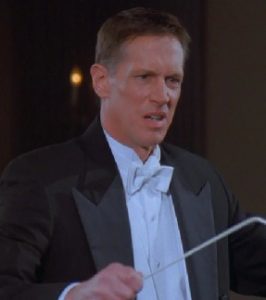I just finished reading Jan Swafford’s Beethoven: Anguish and Triumph and boy are my arms tired! And I actually mean that literally, that thing is like 1,000 pages and probably weighs over ten pounds.
This book was a joy to read from start to finish (which I wholeheartedly recommend you do!) and I came away with a veritable bevy of new insight and discoveries into the life, work, and personality of this man who seems by now so familiar.
Most enjoyable with a book like this is the chance to explore the unknown nooks and crannies of Beethoven’s musical output, both the justly and unjustly neglected. (It’s no secret that Beethoven had his share of clunkers, but when you’re the best composer who ever lived a lot is forgiven.)
But I love nothing more than exploring the pieces that barely even saw the light of day, the scraps, the odds & ends, the Werke ohne Opus, if you will. What follows is a curio cabinet of some of the musical curiosities that Mr. Swafford was so good to bring to light.
Beethoven wrote for the mandolin.
Early in his career he was trying wooing a young Lady Mandolinist and left much to show for it.
Beethoven wrote these SICK piano quartets at the age of FOURTEEN.
https://www.youtube.com/watch?v=i-Et9SugHVc
We all know that Beethoven’s dad wanted him to be a child virtuoso in the image of Mozart, but that the trajectory of young Ludwig’s career never tilted quite so steeply. But man for someone who was considered a lesser prodigy, these quartets are pretty solid!
(Interesting tidbit: due to Johannes van B’s habit of advertising Ludwig as younger than he really was, Ludwig remained confused about his actual age his entire life.)
Beethoven tried to write several operas; Leonore/Fidelio is the only one that made it to the stage.
What’s more, he wrote lots of random little arias and scenes and even a significant portion of a whole act. Mostly he just complained that the librettos he was being offered sucked.
Many of these smaller experiments were journeyman pieces that he wrote while studying Italian opera with Antonio Salieri. Some of them sound surprisingly Rossinian. Like seriously, would you guess that this was Beethoven?
What’s even weirder about this little trio (a standalone work) is that it was used as the concert opener at the second ever performance of the NINTH SYMPHONY. No “Survivor from Warsaw” for old Ludwig van B!
I think it’s a refreshing approach to a problem considered intractable by many conductors – the ninth seems to need a little something to fill out a full concert, but what in the world do you put in front of it? If you’re Beethoven, the answer is “Tremate, empi, tremate”.
Hackwork.
Beethoven spent a surprisingly large amount of time arranging Irish, Welsh, and Scottish folk songs at the request of a random British music publisher named George Thomson. Calling it hackwork, I suppose, is not quite accurate, because Beethoven’s renderings of these little songs are quite sophisticated, much to the consternation of poor Mr. Thomson, who begged Beethoven to simplify the piano writing so that young highland lasses (Mr. Thomson’s target audience) would be able to accompany themselves at the piano from Beethoven’s music.
This project was drawn out over nearly a decade; Beethoven refused to simplify his music and the project nearly led Mr. Thomson’s into financial ruin.
Beethoven could be a real dick.
Beethoven writing about his housekeeper, an old lady: "Fräulein N has been quite different since I threw those half dozen books at her head"
— Will White (@willcwhite) June 2, 2017
But you probably knew that already.
And he was forward thinking when it came to raising money for commissions.
Missa Solemnis: the original kickstarter reward pic.twitter.com/aOqfvyhVwJ
— Will White (@willcwhite) June 3, 2017
But my favorite anecdote contained within the pages of this book took place at the end of Beethoven’s life. What you need to know is that Beethoven never learned to multiply, and scattered among the pages of manuscript paper he used to craft the most glorious works of art known to man are scribbled columns of sums in which he painstakingly added one number to itself x number of times.
The overwhelming impression left by Beethoven’s music is one of victory over struggle. You can hear it in every single bar. Emotional struggle, personal struggle, romantic struggle, heroic struggle, it’s all there, and it’s what each and every one of us experiences inside our innermost souls every single day.
So it’s a testament to the indomitability of Beethoven’s spirit that at the age of 56, lying upon his death bed, stricken with pneumonia, liver disease, alcohol withdrawal, and Heaven knows what else, he finally decided it was time to learn his multiplication tables.
Oh. And one more thing: he was deaf. [mic. drop.]

